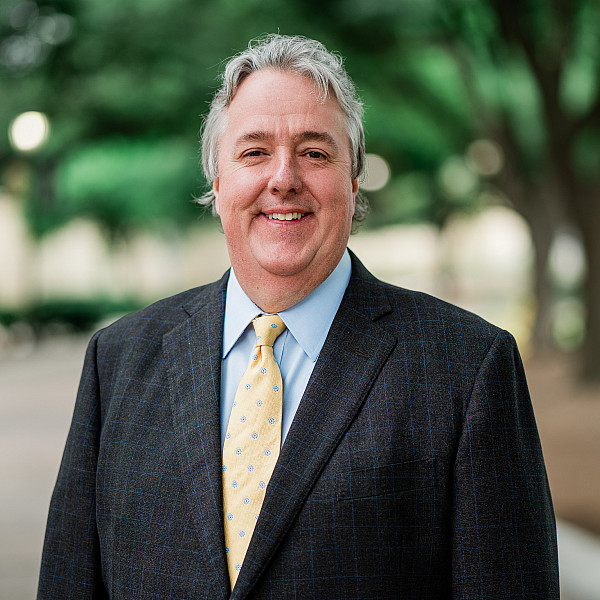News
Student Imagination and Ingenuity Shine at 2024 King Creativity Symposium
Nineteen students participate in seven thought-provoking projects funded by King Creativity Fund grants.
May 23, 2024
May 23, 2024
Once again, the limitless bounds of student imagination were on full display during the annual King Creativity Symposium. Each year, the King Creativity Fund provides generous grants to Southwestern University students pursuing projects that stretch disciplinary boundaries and/or apply new approaches to traditional academic methods.
Throughout the program’s history, King Creativity has supported the design and creation of new objects, tools, processes, communication strategies, performances, works of art, narratives, and solutions to problems.
This year, 19 students were selected as King Scholars, participating in seven different group and individual projects. The grant recipients presented their visionary projects at both the King Creativity Symposium and at the Research and Creative Works Symposium. Each year, one project is declared as the best of the best.

Six other projects were presented as part of the King Creativity Symposium.
Aleena Khan ’24, Natasha Ndele ’24, Mia Santoscoy ’26, Daniela Echevarria ’24, Layla Sinno ’24, and Eric Salinas ’25 teamed up for their project, Framing Texas: Highlighting the Marginalized Groups Who’ve Built Our Lone Star State. The group aimed to provide a voice for the silenced populations who made up Texas’ untold history, centered on slave, immigrant, and minority exploitation. The students created two quilts, both in the shape of the state of Texas, with one quilt acting as a top layer, reflecting the global and classroom glorification of the state. The other quilt, located underneath the top layer, exposed the state’s grim past of exploitation. The project revealed hidden stories and sparked vital conversations about Texas’ reality.
Angel Rodriguez ’24 and Noor Nazeer ’24 presented The Mechanical Man, an artistic piece that attempts to capture and represent the complex emotions and mechanisms that human beings experience on a daily basis. By programming eye-catching movements with motors and sensors in the outline of a human body, the duo displayed the things that we all have in common as people, from unnoticed complex functions to visible emotional reactions.
Annalina Slover ’26, Eliana Solis ’26, Carolyn Waldie ’26, Isabella Saldivar ’26, and Hallie Martinez ’26 created a Robotic Plant Growth System, arising from challenges with ventilation and humidity in the Fondren-Jones Science Center’s plant growth room. The group built a robotic system that cares for plants by artificially controlling specific variables. In their system, a microcontroller waters plants when needed by monitoring the humidity of the soil. It also provides light to plans on a cycle of the user’s choosing.
Taylor Dean ’24 and Madison Deitch’s ’25 project, Regaining Strength and Range of Motion in a Young Adult Male with Spastic Quadriplegic Cerebral Palsy Through Locomotor Training, designed and tested a harness-assisted treadmill apparatus designed for adults with Cerebral Palsy. During the project, a 25-year-old male with Spastic Quadriplegic Cerebral Palsy volunteered to engage in treadmill locomotor training and strength/flexibility training. The duo found that the range of motion of the joints increased on each side of his body after using the apparatus. The project demonstrated that the apparatus could offer more accessible therapeutic options for Cerebral Palsy individuals, potentially improving their quality of life.
In his project Zooxanthellae and Aliivibrio Fischeri: An Affinity Analysis on the Macro Scale, Murphy Jacobie ’27 set out to discover if coral reef bleaching can be reversed. With coral reefs around the world seeing an increased risk of bleaching due to rising ocean temperatures and ocean acidification, Jacobie tested to see if the attraction between Zooxanthellae, the algae found on corals, and Aliivibrio fischeri, a bioluminescent bacteria, could exist on a macroscopic scale. His research is helping scientists better understand the mechanisms for coral bleaching and how to save coral reefs in an increasingly hostile environment.
Finally, Paige Chapman ’24 and Nina Woodward ’25 used mathematical concepts to evoke emotion through a series of paintings in their project, Emotion in Mathematical Art. Four paintings highlighted Fibonacci’s spiral in a dark and foreboding piece, the sin and cos functions that provide a sense of calm and peace, a linear function with varying depths and colors meant to create a mood of passion and anger, and an ellipse in its circle form, which conveys feelings of happiness and joy. Chapman and Woodward hoped to provide a physical representation of the constant connection between math and art.
Hear more about some of these projects from the students behind them:
About the King Creativity Fund
In 2000, Dr. Joey King ’93 donated $500,000 to establish and endow the King Creativity Fund, which supports the innovative and visionary projects of enrolled students at Southwestern.
Encouraging students to take risks and ask questions, the King Creativity Fund annually supports multiple student projects with grant awards ranging from a few hundred to a few thousand dollars.
King Creativity Grants enable students to pursue projects that stretch disciplinary boundaries, that envision bold new ideas, or that draw both on traditional academic methods as well as approaches from outside the academy.
“Creativity” also invokes the use of imagination, the willingness to tackle problems in unorthodox ways or to draw from more than one toolbox, a readiness to take risks, an openness to new perspectives, and an interest in innovation.
Dr. King explains, “This program is a pilot project in creativity. It allows students to have the financial means to select the subject in which they are interested and to learn by doing.”
For more information about the King Creativity Fund, please click here.















